
views
Feeding a Maltese
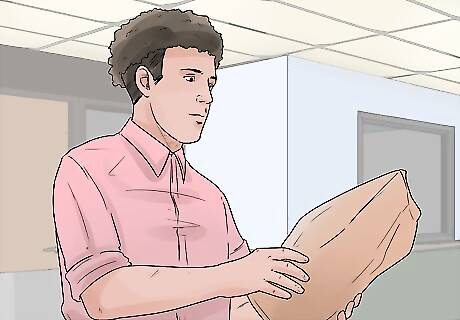
Feed a new puppy or dog the same brand he is used to and only gradually make changes to avoid upsetting his digestion (especially important for a new puppy). The Maltese has a small stomach, so choose a premium food that is high quality. Take your vet's recommendation and also look for a food that has a named meat listed as the main ingredient.
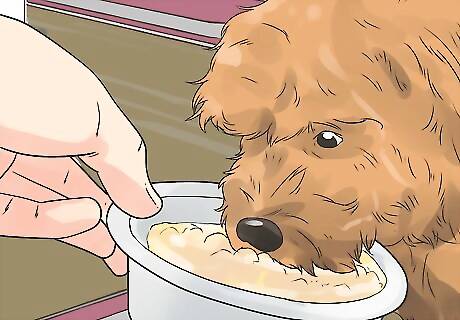
The Maltese can be prone to being a fussy eater so don't encourage this by feeding him human food as "treats". Feed him a high quality dog food and treats recommended by your vet. Always have fresh water and dry kibble available for your Maltese (unless the animal is an adult and is overweight). Maltese puppies can suffer from hypoglycemia, which can be life threatening, if food is not readily available.
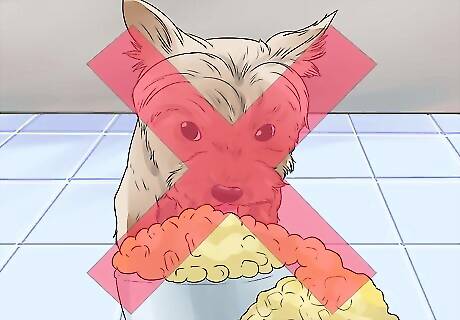
Make sure that your adult dog is not eating too much. It may be that you are giving the dog too much food at meal time or that you are giving too many treats. Consult with your vet if your Maltese is putting on too much weight. He or she may have a suggestions for helping the dog lose weight.
Grooming a Maltese
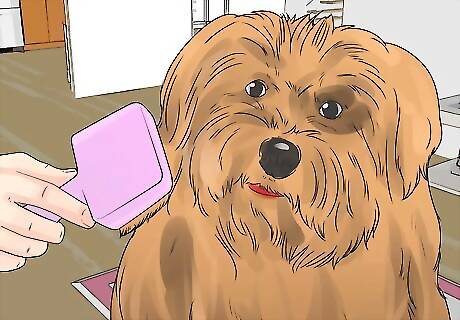
Maltese dogs have long flowing hair that is easily tangled and, like our own, keeps growing. If you don't want to deal with the upkeep a shorter "puppy cut" looks cute on a Maltese. You will need to have him professionally groomed maybe once every six weeks but will still need to brush his hair daily using a nice, soft brush. Remove excess hair and untangle knots while the hair is dry or with a special detangler. Bathing him first will make the tangles worse. You may need to use a comb to get to the root of any tangles and knots. Remember to gently tease them apart. Take extreme care cutting out knots, as it is all too easy to nick the skin.
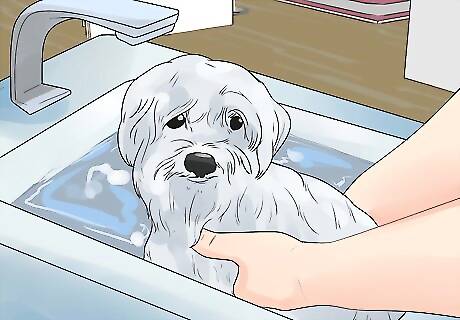
Bathe your Maltese with a mild shampoo and conditioner made for dogs. You may need to bathe a playful puppy once a week, while a calm, older dog will only need a monthly bath. Wash its hair like it's your own, only be very gentle! Don't forget to clean your pup's face with a washcloth.
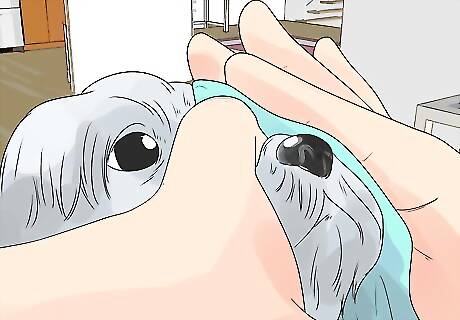
Clean around your Maltese's eyes regularly. Maltese dogs have white hair that is prone to tear staining. You will recognize this as the brown streaks down the face of a white dog. This happens when tears overspill onto the cheek and stay there for a few hours. Substances in the tear fluid oxidizes and change to that rust-colored pigment, which causes the staining. To avoid this, dry the area around your dog's eyes regularly. The amount of tear overflow varies with each individual dog and is more pronounced when they are teething. If the lower lid area or cheek are constantly wet, then wipe hourly. For dogs with less moisture from the eyes, you only need to wipe twice a day or when you spot gloop in the corner of the eye. There are various commercial products available for wiping eyes, but previously boiled water on cotton wool is perfectly sufficient. Dampen the cotton wool with the cool water and wipe away any moisture or stickiness from the eye area. Then finish with a dry piece of cotton wool to pat the area dry.
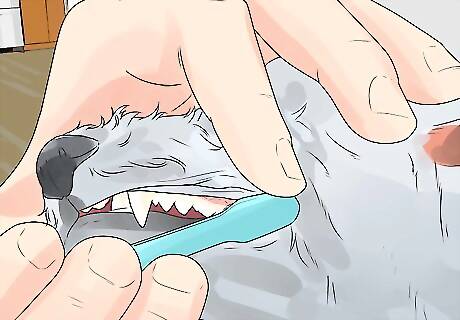
Brush your dog's teeth. Many people don't do this, but it is very, very important, especially for older dogs. This will slow up tartar formation and protect your dog's dental health. Start at a young age, so the dog accepts having its teeth brushed. Use a soft-bristled toothbrush and toothpaste made for dogs. It can be purchased at any pet store. Be aware the Maltese are especially prone to the formation of plaque and then tartar formation. This irritates the gums leading to inflammation and infection. Ultimately this causes gum recession and the teeth to loosen, become infected, and fall out. If this is your first time, rub the gums and teeth with your finger. Adding some soft dog food can make this more pleasant. Brush your dog's teeth before bed. Alternatively speak to your vet about small-sized kibble that has a cleaning action as the dog chews. Be aware that canned food is more likely to build tartar than dry food, and speed up tartar formation.
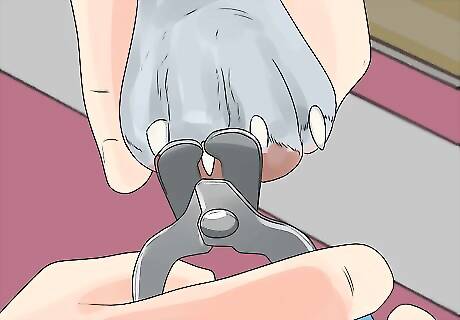
Trim your dog's nails regularly. Maltese nails should be clipped monthly so they do not overgrow and get infected. Using a regular nail clipper, slowly begin to clip the end of your dog's nails, stopping before you reach the live center of the nail. If you are uncertain how much nail to remove, invest in a lesson from the groomer or vet tech. The nail has a living center made up of blood vessels and nerves, called the quick. If you clip too much nail away you will cut the quick, which is painful for the dog and causes bleeding. If in doubt, err on the side of caution and remove the minimum amount possible. The dog may be scared and will struggle. If this is the case, try feeding the dog immediately after the nail trim so that it sees its food as a reward for good behavior. Many Maltese owners trim their dog's nails when the dog is asleep. However, you need to be very careful or it could really startle the dog awake.
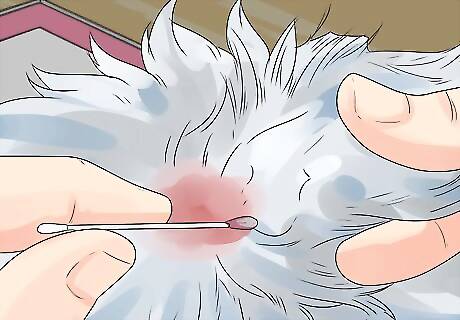
Check the dog's ears on a daily basis. This can be done professionally, but can also be done at home. Go into the outer ears with a Q-tip, but do not stick it into the inner ear. Just use it to clean the visible part of the ear. If there is wax of any sort, be sure to clean it out. Never put water into the dog's ears, as this softens the skin and makes it more likely to become infected. Instead, use an ear cleaner sold for the purpose. These are designed to dissolve wax and also for an excess to evaporate away, so the ear canal is not left over wet.
Exercising, Socializing, and Training a Maltese
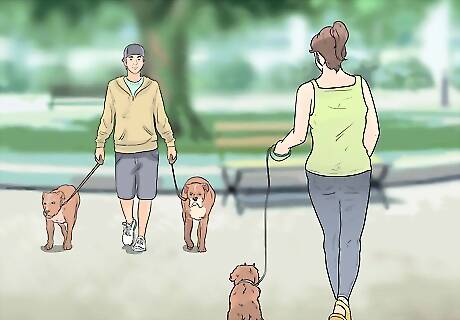
Socialize your dog early. A Maltese, like all dogs, needs to be well socialized in order to become a well-rounded dog. While it is important to bond with your pup, its also important that the dog is open to meeting new people and animals. Expose your puppy to a wide variety of people and animals when it is young, so that it understands that this is a normal and enjoyable part of life. Maltese dogs that are not socialized can become either fearful or aggressive toward strangers. EXPERT TIP Colleen Demling-Riley, CPDT-KA, CBCC-KA, CDBC Colleen Demling-Riley, CPDT-KA, CBCC-KA, CDBC Canine Behavior Consultant Colleen Demling-Riley (CPDT-KA, CBCC-KA, CDBC) is a Canine Behavior Consultant and the Founder of Pawtopia Dog Training. With more than 20 years of experience, she specializes in creating and customizing dog management programs for dog owners. She is a Certified Pet Dog Trainer-Knowledge Assessed, Certified Behavior Consultant Canine-Knowledge Assessed, Certified Dog Behavior Consultant, and American Kennel Club Canine Good Citizen Evaluator. Colleen is a member of the International Association of Canine Professionals and has been a featured expert in national media including the New York Times, Woman’s Day, Readers Digest, Cosmopolitan, and Yahoo.com. Colleen Demling-Riley, CPDT-KA, CBCC-KA, CDBC Colleen Demling-Riley, CPDT-KA, CBCC-KA, CDBC Canine Behavior Consultant Maltese dogs can feel intimidated by larger dogs. Maltese dogs are a small breed known for being sweet and loving towards their families. Due to their small size, they may become overwhelmed when around large dogs and young children. Additionally, if you have a Maltese dog, you may need to be patient and put in extra effort when training them to housebreak.
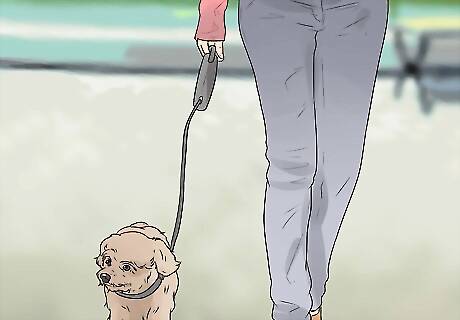
Walk your dog. Although Maltese are good apartment dwellers and don't require a great deal of exercise, it is important for the dog's brain, socialization, sensory system, and enjoyment to get out. Even a fifteen to twenty minute walk can be a nice break for you and your dog. Maltese are adaptable when it comes to exercise. They enjoy walks but are also happy to burn energy in a restricted space, by playing games of fetch. Teach your Maltese not to jump off your bed or couch, though, as this can cause injury. The breed is vulnerable to knee injuries (luxating patellas). Be aware that a bored Maltese may turn to barking to amuse itself.
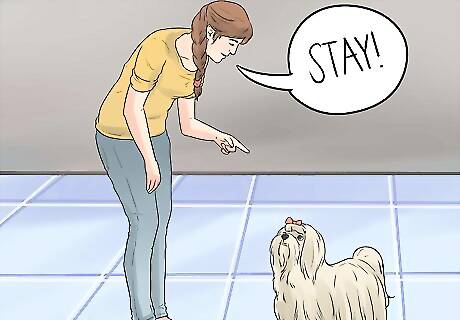
Train your Maltese. The Maltese is an intelligent dog and loves to be stimulated mentally. Like all dogs, your Maltese needs to be trained to sit, stay, and come when called, in addition to being potty trained. Use positive reinforcement when training, as opposed to punishment when the dog does something wrong. These dogs respond much better to treats and love as incentive to do the right thing. Don't be fooled by their small size, they love the mental challenge of training. Indeed, some Maltese excel at agility training, albeit on a small scale, so don't write this off as an activity for your dog.
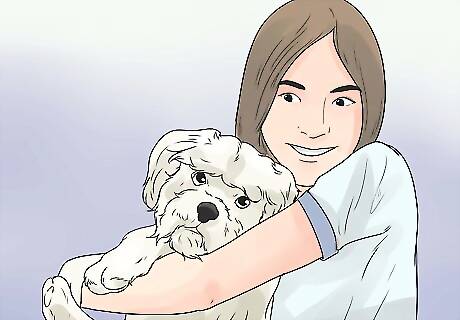
Give your Maltese love and attention. Maltese dogs are beautiful animals that deserve to be treated with love and care. Snuggle with your pup often and show it that you care for it.
Caring For the Health of a Maltese
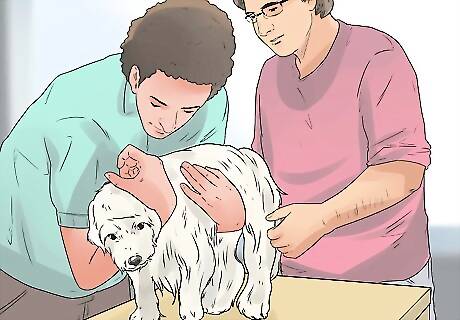
Take your Maltese for annual vaccinations. Your veterinarian will be able to advise you as to which diseases are prevalent in the area, and which it is necessary to vaccinate against. Some states also require all pets to be vaccinated against rabies, in which case you must comply. Take your veterinarian's advice on preventative healthcare such as heartworm, and regular worming treatments and use them regularly.
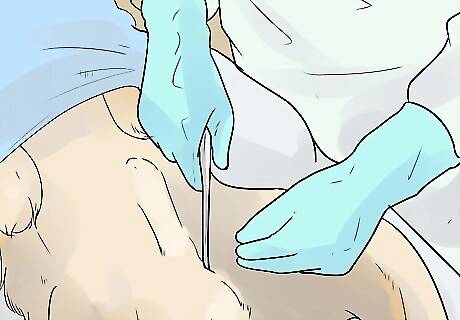
Have your dog spayed or neutered but wait until he or she is at least five months old (preferably nine months). If your dog is a pet and not intended for breeding, then speak to your vet about desexing. This helps reduce antisocial behaviors, such as territory marking in the male. It also reduces the risk of certain diseases in the female, such as mammary cancer (if done before the second season) and pyometra (womb infection).
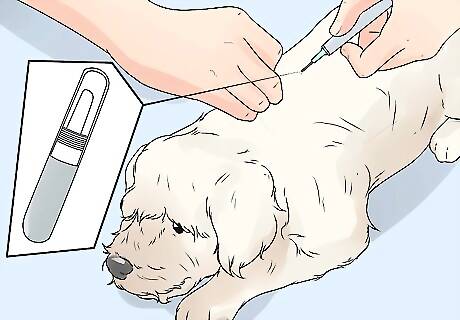
Consider getting your pet microchipped. This is a permanent way of identifying the dog as yours. Should it escape or be stolen, the ID chip allows you to prove ownership, and will help someone who finds your dog locate you (vets can read the chip and find you through the registry).
Deciding if a Maltese is Right For You
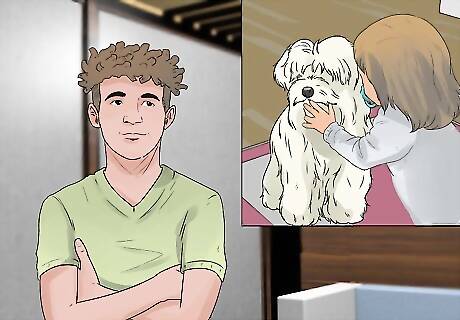
Determine whether the Maltese personality is right for you and your lifestyle. Maltese do like company and can bark or suffer anxiety related problems if they are left alone for long periods of time. Think about whether you can structure your day so that the Maltese is not left alone for more than 4 hours at a time. Be aware that because Maltese like to be with people, they can easily become over-dependant on human company and suffer from stress or "separation anxiety" unless trained from a young age to cope in solitude. To train the dog to do this means deliberately spending small periods of time away from the dog so that it learns to be alone. Be careful not to over pamper the dog as this can make it even more difficult for it when you're not there to fuss it. Most Maltese are friendly, outgoing, and relatively fearless but because they are small (4-7 lbs) and have delicate bones, they are easily injured. As a result, they can become fearful or aggressive. Keep an eye on them around larger animals, and show children how to hold the Maltese properly without squeezing or dropping him. If you have very young children, always supervise them around any pets.

Gauge whether you can care for a Maltese properly. Be aware that the Maltese feel the cold easily. If your home is chilly or you live in a cold environment, then reconsider your choice of dog. Also be aware they have long silky coats, which needs daily grooming and will need to have their hair trimmed regularly because Maltese do not shed like most other breeds. Although this is an added expense (unless you learn to do it yourself), the upside is that the Maltese (like the Poodle) is a relatively hypoallergenic breed.

Prepare to have a dog that lives well into its teens. If you can't commit to such a long term undertaking, or you expect your circumstances to change, then reconsider getting a dog , especially one that can live to be 14 or 15. Adopting a dog is a long-term commitment, not something to take lightly.
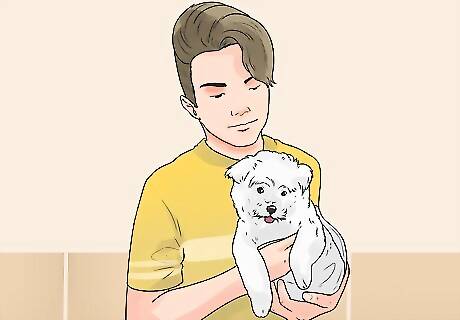
Pick your specific Maltese wisely. There are thousands of Maltese breeders out there, but there are also plenty of purebreds in animal shelters. If you know someone with a Maltese ask where that person got it. Make sure that before you bring your Maltese home, that it gets along with other pets or children you may have. Make sure you see the Maltese puppy with his mother. If for whatever reason the mother is not present, walk away. This is a give away sign that the puppy is from a puppy mill and such immoral breeding programs should not be encouraged. Make sure your Maltese was socialized well as a puppy, as this helps make it become a confident outgoing adult.




















Comments
0 comment